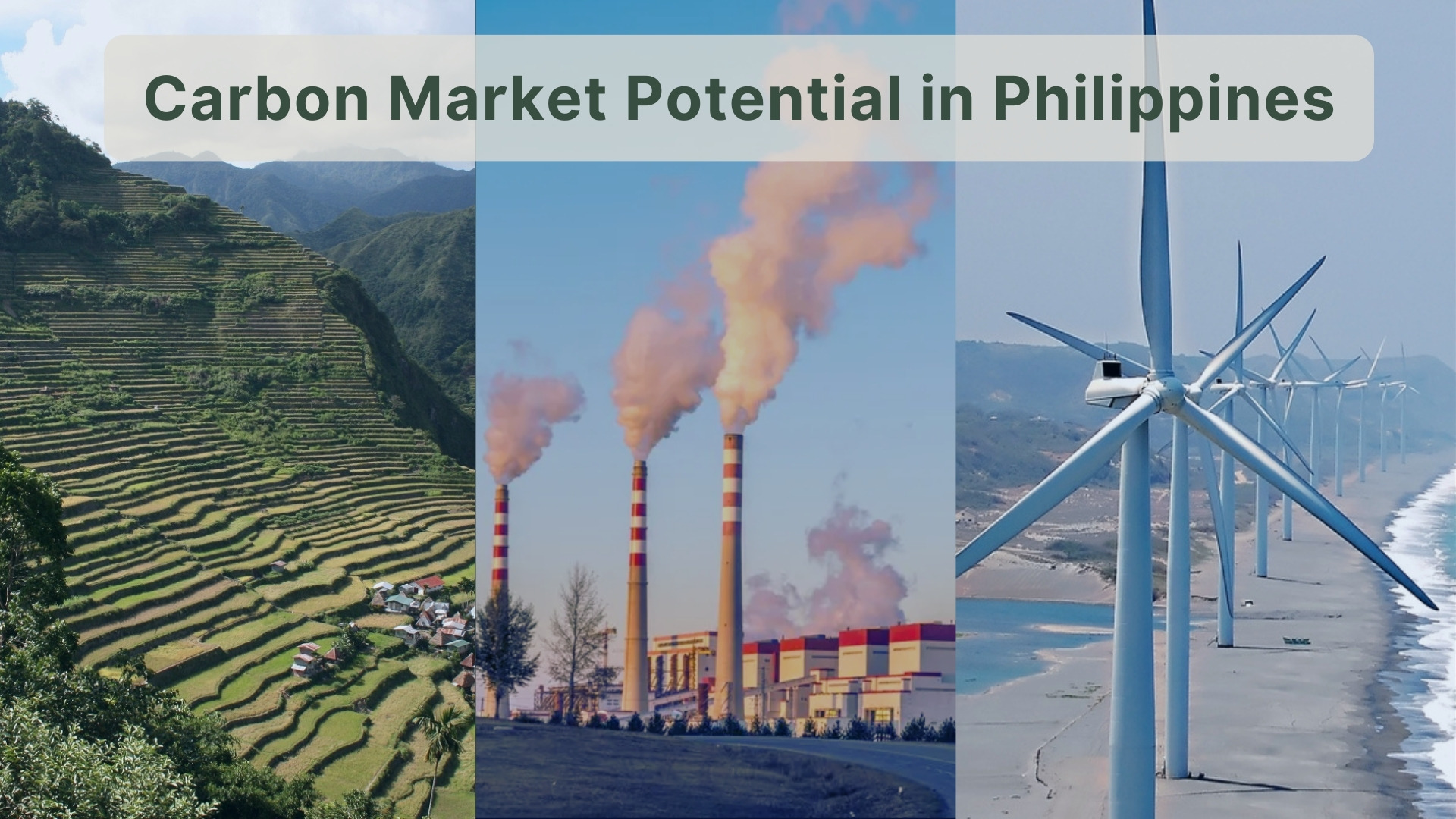Scaling Nature-Based Solutions in the Philippines: Unlocking Carbon Market Potential
News

According to the BCG-Fairatmos report, despite covering less than 1% of the world's total land area, Southeast Asia has the potential to supply up to 30% of global carbon offsets by 2030, equivalent to 300 Mt CO2e per year. The Philippines alone accounts for 2% of this potential, translating to approximately 4- 6 Mt CO2e annually.⁴
The Department of Environment and Natural Resources (DENR) in Philippines plays a central role in advancing climate policies, regulating environmental protection, and overseeing carbon market developments. To harness this potential, DENR has identified 1.2 million hectares of forest land as priority investment areas for reforestation, agroforestry, and forest-related developments.¹
The Philippines' Commitment to Climate Action
The Philippines has committed to a 75% reduction in greenhouse gas (GHG) emissions under its Nationally Determined Contributions (NDCs) by 2030. Of this target, 2.71% is unconditional, while the remainder is contingent on international financial and technical support. Unlike other sectors, the forestry sector is not classified as an emitter because the country has been designated as a net carbon sink. This marks an improvement from its previous Intended NDC target of a 70% reduction, primarily focusing on energy, transport, waste, and industry. Moreover, the Philippines' NDC commitment surpasses the expected targets relative to its current emission levels, positioning the country as an ambitious climate leader in the region.³
In line with its carbon market readiness, the Philippines announced at COP29 in Baku that it will finalize its national registry basics by the end of 2024 and complete a carbon market blueprint by Q2 2025. This initiative underscores the country’s commitment to building a structured and transparent carbon trading ecosystem, enhancing its participation in both voluntary and compliance markets.²
Moving Forward: The Role of Carbon Project Developers
With 1.2 million hectares earmarked for NBS development, carbon project developers have a unique opportunity to lead reforestation, agroforestry, and blue carbon initiatives. Leveraging advanced MRV technology, sustainable financing models, and community-based conservation strategies will be essential to unlock the Philippines’ full carbon offset potential.
As a growing player in the global voluntary carbon market, the Philippines must continue refining its regulatory frameworks, strengthening carbon credit verification, and fostering multi-stakeholder collaboration. By doing so, the country can transform its natural assets into a globally recognized carbon sink, positioning itself as a leader in sustainable climate solutions.
Since the phillippines carbon market is opening up, start your carbon project now with Fairatmos.
Visit our 🌐 website to learn more!
📩 Contact our team - HERE
Reference list:
-
Department of Environment and Natural Resources (2025). OPENING REMARKS OF DENR SECRETARY MARIA ANTONIA YULO LOYZAGA (During the 2nd Philippine-Japan Environment Week , 14 January 2025, Makati City) | DENR. [online] GOVPH. Available at: https://denr.gov.ph/secretarys-corner/opening-remarks-of-denr-secretary-maria-antonia-yulo-loyzaga-during-the-2nd-philippine-japan-environment-week-14-january-2025/
-
Pandey, N. (2024). COP29: BRIEFING – Philippines to finalise national registry basics by year-end, ready carbon market blueprint by Q2 2025. [online] Carbon Pulse. Available at: https://carbon-pulse.com/342062/
-
UNDP (2023). Philippines. [online] UNDP Climate Promise. Available at: https://climatepromise.undp.org/what-we-do/where-we-work/philippines
-
Yulius, Siregar, H., Subianto, K., Handoyo, D.A., Wido, G., Rialucky, N. and Rachman, C.N. (2023). Climate Technology in Southeast Asia: Key to Unlocking the World’s Carbon Sink. [online] BCG Global. Available at: https://www.bcg.com/publications/2023/climate-technology-in-southeast-asia-key-to-unlocking-the-worlds-carbon-sink
